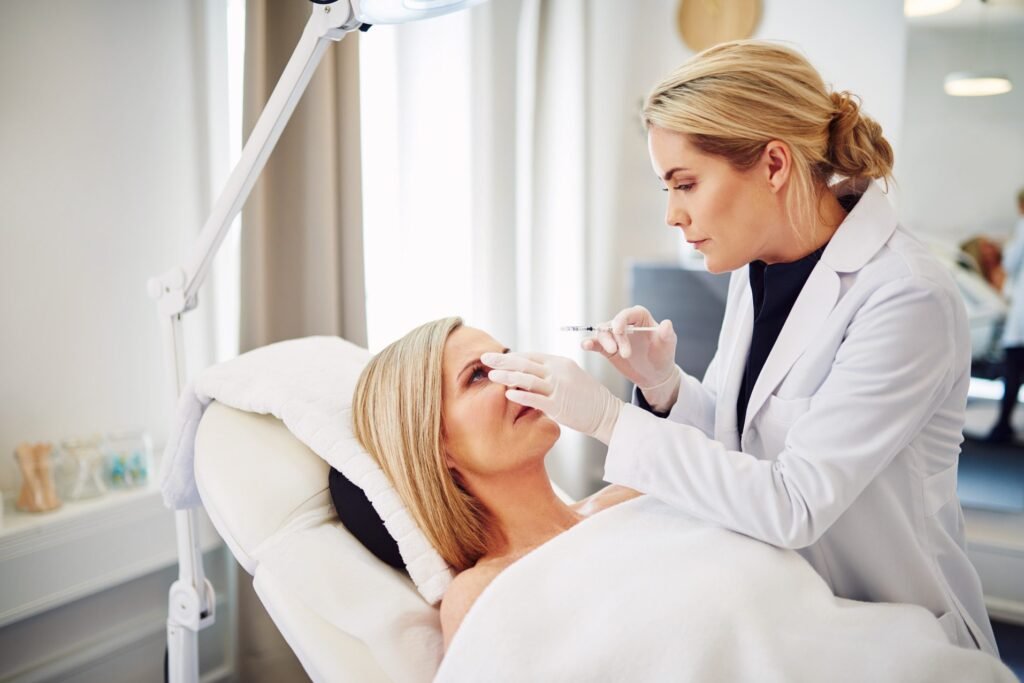When achieving a more youthful look, individuals often consider various cosmetic procedures to address the common signs of aging. Botox injections have gained significant popularity due to their effectiveness in reducing wrinkles and fine lines. While Botox is commonly associated with treating forehead wrinkles and crow’s feet, many wonder if it can be used under the eyes. It is important to understand the use of Botox under the eyes, its effectiveness, safety considerations, and possible alternatives.
Understanding the Mechanism of Botox
Botox, derived from botulinum toxin, is a neurotoxic protein produced by the bacterium Clostridium botulinum, known for its fascinating properties in medical and cosmetic treatments. This remarkable substance has gained immense popularity and recognition as a highly effective solution for addressing various concerns related to facial aesthetics. Its primary function lies in its ability to temporarily paralyze or relax specific muscles, providing individuals with the opportunity to achieve a more youthful and refreshed appearance.

A Common Use for Addressing Crow’s Feet
FDA approved Botox is widely recognized for its effectiveness in treating crow’s feet, the fine lines and wrinkles that form around the corners of the eyes. By injecting Botox into the muscles responsible for these lines, muscles temporarily weaken, leading to smoother and less noticeable crow’s feet. It is essential to note that this treatment primarily focuses on the outer corners of the eyes rather than the delicate skin directly under the eyes.
Considerations for Under-Eye Skin
The skin beneath the eyes is notably thinner and more delicate than other facial areas. As a result, using Botox under the eyes requires a more cautious approach. The sensitive nature of this skin makes it prone to adverse effects such as bruising, swelling, and other complications if not treated with care. Therefore, seeking the expertise of a qualified and experienced professional specializing in administering Botox in this delicate area is crucial.
Treatment for Under-Eye Wrinkles
While Botox is for dynamic wrinkles caused by muscle movement, it is generally not recommended for treating static wrinkles, which are visible even when the face is at rest. Under-eye wrinkles are often categorized as static wrinkles, resulting from factors like a loss of elasticity and collagen, sun exposure, and genetics. In such cases, alternative treatments like dermal fillers or laser resurfacing may be more suitable options.
Exploring Alternatives
When addressing under-eye concerns, alternative treatments may prove more effective than Botox. Dermal fillers, for instance, can add volume to hollow areas and smooth out fine lines, resulting in a more youthful and rejuvenated appearance. Another option is laser resurfacing, which stimulates collagen production and enhances the texture and overall look of the skin.
Safety Considerations and Possible Risks
As with any cosmetic procedure, using Botox under the eyes carries potential risks and side effects. These can include bruising, swelling, redness, or even temporary drooping of the eyelid if injected incorrectly. To minimize these risks, select a reputable practitioner possessing the necessary experience and expertise in administering Botox. Additionally, always disclose medical conditions or allergies before the procedure to avoid potential complications.
Seeking Professional Consultation
Before undergoing any cosmetic procedure, including Botox under the eyes, always consult with a qualified professional. By doing so, individuals can receive a thorough assessment of their specific concerns, skin type, and medical history, leading to a personalized treatment plan. A comprehensive consultation helps set realistic expectations and ensures the chosen procedure aligns with the individual’s aesthetic goals.
While Botox is a popular and effective treatment for reducing wrinkles and fine lines, its usage under the eyes requires careful consideration and expertise. The delicate nature of the skin in this area demands a cautious approach, and alternative treatments like dermal fillers or laser resurfacing may provide more satisfactory results. Through consultation with a qualified professional, individuals can make well-informed decisions regarding their cosmetic goals and explore the most suitable options for achieving a youthful appearance.